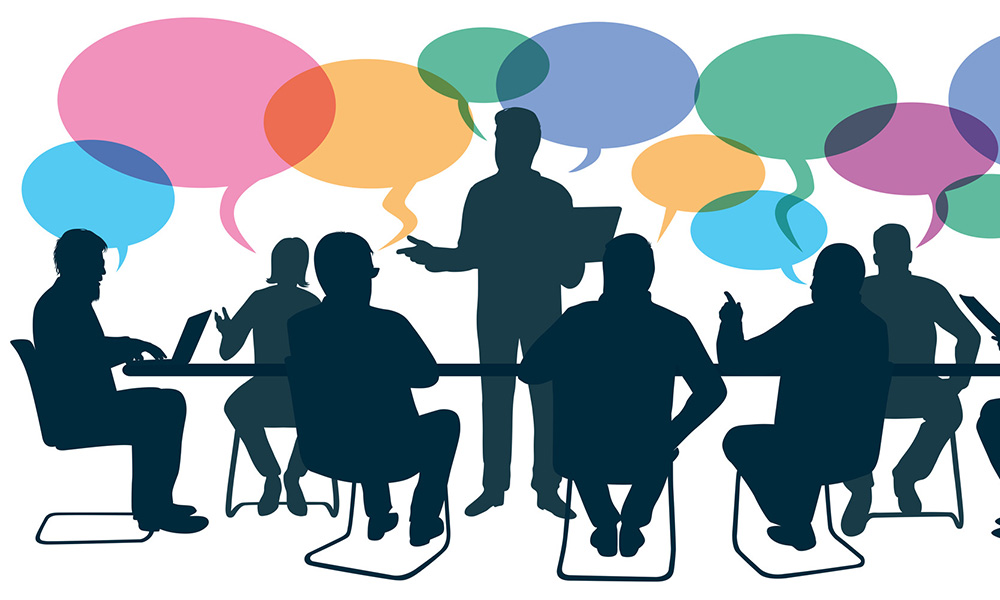In the last few years, we have seen apologising becoming part of the normal business discourse. We have seen a flurry of public apologies from executives for various issues such as poor customer service, bad product quality, data breaches, insensitive remarks or pointless rants. Yet, knowing if, when and how to say sorry is something many of us struggle with. Professional road racing cyclist Greg LeMond put it well when we said: “more people should apologise and more people should accept apologies when sincerely made”.
So, my message today is on the art of apologising and how we can use it as a way to reflect and learn and build stronger relationships.
Saying “I’m sorry” is among the first things you learn as a child. When you’re in the wrong, you apologise. You’re made to understand what you need to do differently. You promise to make an effort to not do it again. It’s rather simple. But then, somewhere along the line, it stops working that way.
Why is it difficult to apologise?
Probably because introspecting and finding yourself in the wrong is not something that most of us find easy to do. Apologising is uncomfortable and confrontational. It involves putting yourself out there; focusing on where you are wrong. And being wrong can be read as flawed. It hurts and makes you feel uncomfortable about yourself. It also tilts the power play of sorts – and not in your favour. Apologising can put you on the back foot, and make you vulnerable. So, it isn’t easy to step up and offer an apology. At the heart of it, you don’t want to be the person who was wrong. So, you look for excuses and offer explanations and try to find a way around it. If someone calls you out on it, you tend to get defensive. And chances are that it only leads to more conflict.
Does that sound somewhat familiar? What happens when you go wrong? Do you have the humility and self awareness to make an apology? Can you be part of the somewhat uncomfortable and sometimes difficult conversations that it can result in? How open are you to admitting a mistake and committing to change? How do you react when the apology involves the people who you love and trust and admire the most? Are you more likely to apologise then; or is this something that you think can go unsaid?
What you need to know about apologising
- There is a difference between what you did and who you are. Apologising doesn’t make you any less of a person. If anything, it shows that you have the humility to accept when you go wrong.
- Apologising doesn’t need to lead to more conflict. Very often, people worry that apologising opens up conversations for more disagreements and mud slinging. But that doesn’t need to be so. Apologising is a step towards resolving your differences.
- This isn’t about one-upmanship.Don’t hold back from apologising because you think that if you do so, it absolves anyone else involved of all responsibility. This isn’t about tallying score. Focus on yourself and what you are responsible for doing. If anything, you apologising is an example for other people.
- Don’t try to wish it away.Not bringing it up doesn’t make it go away. It only makes it worse over time.
- Apologising doesn’t take away control. In fact, it puts you more in control of where your relationship is headed. Apologising comes from introspection and self awareness and the desire to better the way things are. That approach can only make your relationship stronger.
The art of apologising
Think of a time when you felt that you should have apologised, but you didn’t. What held you back? And what did it really achieve?
An apology in itself can’t solve for everything. But it does open up the space for conversation and finding a way forward. And a genuine apology can make all the difference. It isn’t enough however, for you to just want to do it. You need to be able to do it right. So, here are six simple tips on how to approach an apology:
1. Own up
Did you make the mistake? If yes, then just admit it and say you are sorry. That’s the first step. Take complete accountability for what has happened. Drop the excuses. What you say is important. It has to be: “I’m sorry, I was wrong. I made a mistake and I won’t do it again”. That’s an apology. Not: “I’m sorry, I’m wrong, but you started it…” Don’t make it a non-apology apology. It will only make the other person feel like you are shirking responsibility and that the apology isn’t authentic. And that will lead to further arguments.
2. Articulate it
If you’re sorry, say it. Don’t assume that it is understood or that some things go unsaid. This probably happens with the people closest to us; the relationships that we tend to take a little for granted. And that’s the big mistake right there. You need to keep working towards your relationships and being able to apologise when things go wrong is a significant part of that.
3. Timing matters
Don’t drag out apologies. The more time you allow to pass, the greater is the chance of there being further misunderstandings and hurt. A good apology is made quickly. It shows that you are truly invested in it. It also shows that you know when you have made a mistake.
4. Empathise
Put yourself in the other person’s shoes. Try and appreciate the other point of view. Understand how you have possibly hurt the person and why it is that you need to apologise. Show them that you understand how you made them feel – “I think that when I did that, I probably made you feel undervalued…” It will help you develop a deeper appreciation of your relationship. It will also go a long way in helping you approach similar situations differently going ahead.
5. Talk about what will change
Someone once said: “Any good apology has three parts, (1) I’m sorry, (2) It’s my fault and (3) What can I do to make it right? Most people forget the third part.” It really helps to tell the other person what it is that you will do differently going ahead. Thinking this through and trying to find a mutually acceptable approach is important to ensure a change in behaviour. Provide some assurance that the situation will not recur. Apologies start to lose meaning otherwise.
6. Take the next step
After an apology comes that awkward time, when you’re not sure what to do next. You’ve ironed out your differences somewhat, but things aren’t quite back to normal yet. Some people need time off. Some people want to get over it quicker. But talk this though and find your way around it, together.
Bottom line, if you want to be an authentic leader, it is important that when you mess up, you show humility, apologise, take responsibility, make amends and learn from it. You will also be setting an example for your team and the kind of culture that we want to foster at Godrej.
I am sure that many of you have personal experiences to share. I look forward to hearing from you.








Important points for people who are aspiring for leadership roles and even in our day to day life. “Apologising – humility – unlearning – relearning – staying relevant” is a key virtuous cycle.
It takes a bigger person to apologise and take responsibility, however the feeling of relief afterwards is motivating enough to learn, reflect and move on.
Dear Vivekji,
The third part of apologising, is the most important part I believe, “What can I do to make it right?” Thank you!